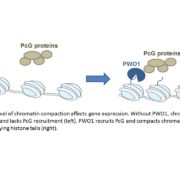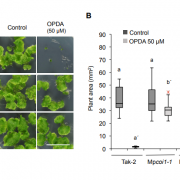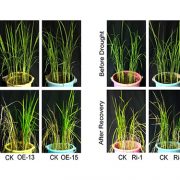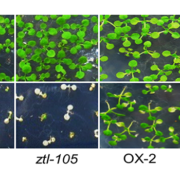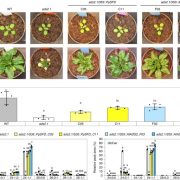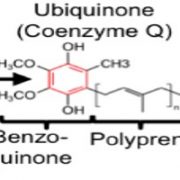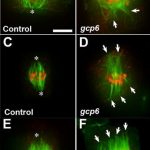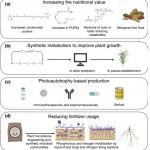Pheophorbide a may regulate jasmonate signaling during dark-induced senescence
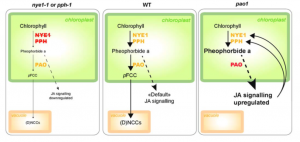
During leaf senescence, nitrogen-rich chlorophyll is broken down through a regulated process so that nitrogen-containing compounds can be reassimilated into the plant body. Chlorophyll catabolites are sequestered in the vacuole as linear tetrapyrroles known as phyllobilins, produced through the action of the porphyrin ring-opening activity of PHEOPHORBIDE A OXYGENASE (PAO); this is known as the PAO/phyllobilin pathway. Starting with loss-of-function mutants of PAO and two other chlorophyll-catabolic enzymes, Aubry et al. carried out a transcriptomic and metabolomic study during leaf senescence. The pao1 mutant accumulates pheophorbide a and shows a dramatically altered pattern of gene expression for chlorophyll degradation genes as well as for genes involved in jasmonic acid (JA) signaling and an increase in JA levels; JA is a known inducer of senescence. The authors propose “a retrograde signaling function for the PAO/phyllobilin pathway that uses JA-signaling to coordinate chloroplasts and the nucleus during dark-induced senescence.” (Summary by Mary Williams) Plant Physiol. 10.1104/pp.19.01115


